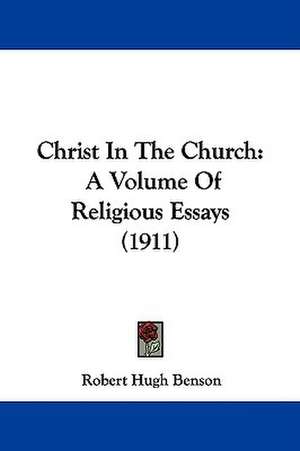Christ In The Church
Autor Robert Hugh Bensonen Limba Engleză Paperback – 16 feb 2009
| Toate formatele și edițiile | Preț | Express |
|---|---|---|
| Paperback (2) | 100.91 lei 3-5 săpt. | |
| CREATESPACE – | 100.91 lei 3-5 săpt. | |
| Kessinger Publishing – 16 feb 2009 | 167.83 lei 38-44 zile |
Preț: 167.83 lei
Nou
Puncte Express: 252
Preț estimativ în valută:
32.13€ • 33.46$ • 26.66£
32.13€ • 33.46$ • 26.66£
Carte tipărită la comandă
Livrare economică 08-14 februarie
Preluare comenzi: 021 569.72.76
Specificații
ISBN-13: 9781104082017
ISBN-10: 1104082012
Pagini: 240
Dimensiuni: 152 x 229 x 13 mm
Greutate: 0.35 kg
Editura: Kessinger Publishing
ISBN-10: 1104082012
Pagini: 240
Dimensiuni: 152 x 229 x 13 mm
Greutate: 0.35 kg
Editura: Kessinger Publishing
Notă biografică
Robert Hugh Benson (1871 - 1914) was an English Anglican priest who in 1903 was received into the Roman Catholic Church in which he was ordained priest in 1904. He was a prolific writer of fiction and wrote the notable dystopian novel Lord of the World (1907). His output encompassed historical, horror and science fiction, contemporary fiction, children's stories, plays, apologetics, devotional works and articles. He continued his writing career at the same time as he progressed through the hierarchy to become a Chamberlain to the Pope in 1911 and subsequently titled Monsignor.
